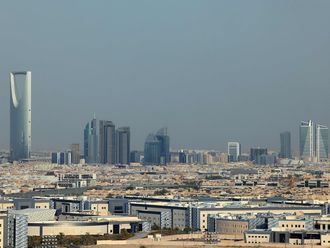London: The World Bank is likely to increase the size of its green bond issues to a range of $300 million (Dh1.1 billion) to $500 million this year to attract large bond funds to the environmental debt market, said an official at one of its lead managing banks.
The World Bank so far has issued more than $3 billion of triple-A rated green bonds and has used the proceeds to support its projects in areas such as renewable energy, flood protection and watershed management in developing nations.
Most of the bank's 46 green bond transactions have been under $100 million, which fall off the radar of many large bond fund managers.
"We expect to see bigger issues coming out in 2012," Christopher Flensborg, head of sustainable products at Skandinaviska Enskilda Banken (SEB), told Reuters.
According to the Organisation for Economic Co-operation and Development (OECD), environmental bonds could raise hundreds of billions of dollars a year to help finance a shift to cleaner economic growth if governments set strong goals such as for slowing climate change.
SEB, a top lead manager for World Bank green bonds, in December increased the size of a World Bank green bond to $510 million. Flensborg said SEB is likely to work together with other banks to scale up the size of future issues.
Multilateral development banks have issued just over $7 billion in green bonds in varying currencies so far. The market, including some private sector bonds, totals around $12 billion, a small fraction of the more than $90 trillion held in global bond markets.
Bigger green bond issues are likely to appeal to large bond fund managers such as State Street Global Advisers, one of the world's biggest fixed income managers with $306 billion in assets, he said. Last October, State Street announced a green bond strategy to enable its investors a way to direct fixed income investments to climate solutions.
Fund appeal
UN climate talks in South Africa in December made headway on the design of a green climate fund to channel up to $100 billion a year by 2020 to poorer nations but achieved little on establishing where the money will come from to fill it.
"I see the green bond being an important part of that contribution," Flensborg said. He added banks are working with investors and environmental groups to develop international certification standards.












